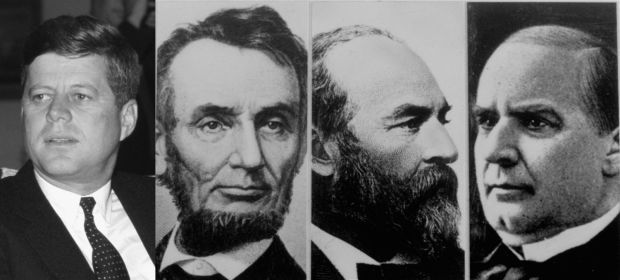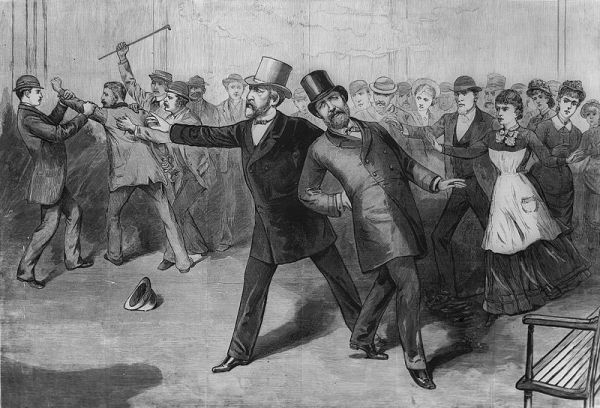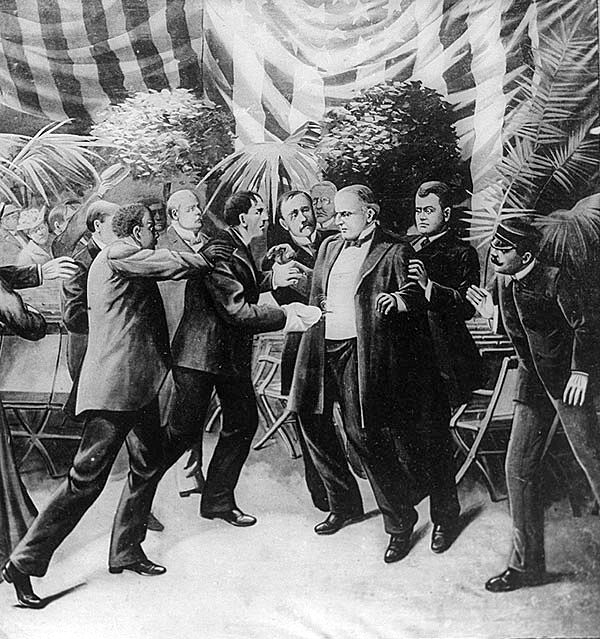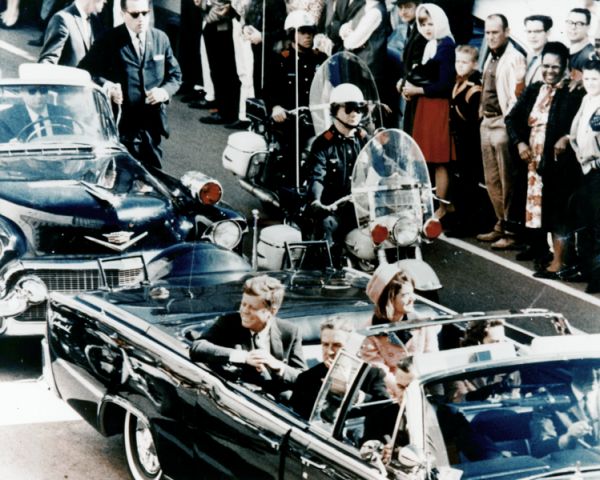- ABRAHAM LINCOLN
- AMERICA
- AMERİKA
- AMERİKADA BAŞKAN SUİKASTLERİ
- ANDREW JACKSON
- ARTICLE
- ASSASSINATION
- BAŞKAN SUİKASTİ
- BAŞKANLIK
- CHESTER ARTHUR
- ENGLISH
- FORDS THEATRE
- FRANKLIN D. ROOSEVELT HARRY S. TRUMAN
- GARFIELD
- GEORGE H. W. BUSH
- GERALD FORD
- HERBERT HOOVER
- İNGİLİZCE
- JFK
- JIMMY CARTER
- JOHN F. KENNEDY
- KENNEDY
- LINCOLN
- MAKALE
- MCKINLEY
- Oktay Kaymak
- PRESIDENCY
- PRESIDENTIAL ASSASSINATIONS
- RICHARD NIXON
- RONALD REAGAN
- SUİKAST
- THEODORE ROOSEVELT
- US
- US FOREIGN POLICY
- WILLIAM HOWARD TAFT
ABSTRACT
The U.S. President has not always had people protecting him. In the country’s early years, many people believed the young democratic republic was immune to political violence. The White House was even relatively open; only one policeman and a secretary stood between the president and Pennsylvania Avenue. With each presidential assassination, however, protection has increased from protecting not only the president, but also their family, former presidents, and presidential candidates. In this project, we will examine in some detail is that of president’s assassination in United States. In first section we will briefly review America’s modern presidential system. Next we examine assassinations, focusing on four president. We look at political paradoxes in US. We would argue that this project is an interdisciplinary study.
Keywords: US, Presidency, Assassination, America, Kennedy, Lincoln

INTRODUCTION
Firstly, I want to give you some information about Presidency in US. We try to answer specific questions. What is the Presidency? Who is eligible to become a President? How is a President chosen? What are the powers of the President? What is the Vice-Presidency?
The President is the head of the executive branch of the federal government of the United States.[1] He is both the head of state and the head of government, as well as the military commander chief and chief diplomat. He presides over the executive branch of the government, a vast organisation numbering about four million people, including one million active-duty military personnel.
If you want to be a president, you need certain conditions. To be President, one has to: -be a natural born citizen of the United States- be at least 35 years old – have lived in the US for at least 14 years.[2]
The President is elected for a fixed term of four years and may serve a maximum of two terms. Originally there was no constitutional limit on the number of terms that a President could serve in office and the first President George Washington set the precedent of serving simply two terms. Following the election of Franklin D Roosevelt to a record four terms, it was decided to limit terms to two and the relevant constitutional change – the 22nd Amendment – was enacted in 1951. Elections are always held on the first Tuesday after the first Monday in November to coincide with Congressional elections. So the next election will be held on 8 November 2016. The President is not elected directly by the voters but by an Electoral College representing each state on the basis of a combination of the number of members in the Senate (two for each state regardless of size) and the number of members in the House of Representatives (roughly proportional to population). The states with the largest number of votes are California (55), Texas (38) and New York (29). The states with the smallest number of votes – there are six of them – have only three votes. The District of Columbia, which has no voting representation in Congress, has three Electoral College votes. In effect, therefore, the Presidential election is not one election but 51.
The total Electoral College vote is 538. This means that, to become President, a candidate has to win at least 270 electoral votes. The voting system awards the Electoral College votes from each state to delegates committed to vote for a certain candidate in a “winner take all” system, with the exception of Maine and Nebraska (which award their Electoral College votes according to Congressional Districts rather than for the state as a whole). In practice, most states are firmly Democrat – for instance, California and New York – or firmly Republican – for instance, Texas and Tennessee. Therefore, candidates concentrate their appearances and resources on the so-called “battleground states”, those that might go to either party. This system of election means that a candidate can win the largest number of votes nationwide but fail to win the largest number of votes in the Electoral College and therefore fail to become President. Indeed, in practice, this has happened three times in US history: 1876, 1888, and 2000. If this seems strange (at least to non-Americans), the explanation is that the ‘founding fathers’ who drafted the American Constitution did not wish to give too much power to the people and so devised a system that gives the ultimate power of electing the President to members of the Electoral College. The same Constitution, however, enables each state to determine how its members in the Electoral College are chosen and since the 1820s states have chosen their electors by a direct vote of the people. The United States is the only example in the world of an indirectly elected executive president.[3]
 Source: https://www.usa.gov/election
Source: https://www.usa.gov/election
There are the some powers of president. The main tasks are:
*Within the executive branch, the President has broad constitutional powers to manage national affairs and the workings of the federal government.
*The President may issue executive orders to affect internal policies.
*The President has the power to recommend measures to Congress and may sign or veto legislation passed by Congress. The Congress may override a presidential veto but only by a two-thirds majority in each house.
*The President has the authority to appoint Cabinet members, Supreme Court justices. Federal judges, and ambassadors but only with the ‘advice and consent’ of the Senate which can be problematic especially when the Senate is controlled by a different political party to that of the President.
*The President has the power to pardon criminals convicted of offences against the federal government
*The President has the power to make treaties with the ‘advice and consent’ of the Senate.
*The President can declare war for 60 days but then has to have the approval of Congress.[4]
Last but not least, we will look at other interesting facts about the Presidency. The President may be impeached which means that he is removed from the office. The House of Representatives has the sole power of impeaching, while the Senate has the sole power to try all such impeachments. Two U.S. Presidents have been impeached by the House of Representatives but acquitted at the trials held by the Senate: Andrew Johnson (1868) and Bill Clinton (1999). Richard Nixon resigned before he would certainly have been impeached (1974). The first United States President was George Washington, who served from 1789-1797, so that the current President Barack Obama is the 44th to hold the office. However, there have been 45 presidencies. Grover Cleveland was the 22nd and 24th President and therefore was the only US president to serve two non-consecutive terms (1885-1889 and 1893-1897) and to be counted twice in the numbering of the presidents. So far, every US President has been male. All but one President has been Protestant (the exception was John Kennedy who was a Catholic) and all but one President has been white (the exception is Barack Obama). The President is sometimes referred to as POTUS (President Of The United States) and the Presidency is often referred to by the media as variously the White House, the West Wing, and the Oval Office.
After this point we will look at Vice-Presidency. The position of Vice-President is elected on the same ticket as that of the President and has the same four-year term of office. The Vice-President is often described as ‘a heartbeat away from the Presidency’ since, in the event of the death or incapacity of the President, the Vice-President assumes the office.[5]
Now it is time to go to the point. From now on I want to give you some information about U.S. Presidential Assassinations.
PRESIDENTIAL ASSASSINATIONS
Four sitting Presidents have been assassinated: Abraham Lincoln in 1865, James A. Garfield in 1881, William McKinley in 1901, and John F. Kennedy in 1963. A further eight Presidents were subject to near misses in assassination attempts. Now I want to talk about these president.
- Abraham Lincoln
Abraham Lincoln was the first American president to be assassinated. He was attacked by actor John Wilkes Booth, a Southern sympathizer, during a performance at Ford’s Theatre in Washington, D.C., on April 14, 1865. It was exactly five days after the end of the Civil War.
John Wilkes Booth, born May 10, 1838, was an actor who performed throughout the country in many plays. He was the lead in some of William Shakespeare’s most famous works. Additionally, he was a racist and Southern sympathizer during the Civil War. He hated Abraham Lincoln who represented everything Booth was against. Booth blamed Lincoln for all the South’s ills. He wanted revenge.
On the morning of Friday, April 14, 1865, Booth dropped by Ford’s Theatre and learned that the president and General Grant were planning to attend the evening performance of Our American Cousin. He held one final meeting with his co-conspirators. He said he would kill Lincoln at the theater (he had since learned that Grant had left town). Atzerodt was to kill Vice-President Andrew Johnson at the Kirkwood House where Johnson resided. Powell was
 Source:http://www.lib.udel.edu/ud/spec/exhibits/lincolnbicent/images/04_assass/assassination.jpg
Source:http://www.lib.udel.edu/ud/spec/exhibits/lincolnbicent/images/04_assass/assassination.jpg
assigned to kill Secretary of State William Seward. Herold would accompany Powell. All attacks were to take place simultaneously at approximately 10:15 P.M. that night. Booth hoped the resulting chaos and weakness in the government would lead to a comeback for the South.
The presidential party arrived at Ford’s at about 8:30 P.M. Armed with a single shot derringer and a hunting knife, Booth arrived at Ford’s at about 9:30 P.M. Joseph Burroughs, a boy who worked at the theater, held his horse in the rear alley. Booth went next door to a saloon for a drink. He entered the front of Ford’s Theatre around 10:07 P.M. Slowly he made his way toward the State Box where the Lincolns were sitting with Clara Harris and Major Henry Rathbone. Lincoln’s bodyguard, John Parker of the Metropolitan Police Force, had left his post. At about 10:15 P.M. Booth opened the door to the State Box, shot Lincoln in the back of the head at near point-blank range, and struggled with Rathbone. Booth stabbed Rathbone in the arm and jumped over 11 feet to the stage below. When he hit the floor he snapped the fibula bone in his left leg just above the ankle. Many in the theater thought he yelled “Sic Semper Tyrannis” (Latin for “As Always to Tyrants”). Mrs. Lincoln screamed, Booth flashed his knife at the audience, and he made his way across the stage in front of more than 1,000 people. Everything happened so fast that no one had time to stop him. Booth went out the back door, climbed on his horse, and escaped from
Atzerodt made no attempt to kill Johnson, and Powell stabbed Seward but failed to kill him. Herold escaped from the capital using the same bridge as Booth. The two met in Maryland and stopped briefly around midnight at Mary Surratt’s leased tavern in Surrattsville where Mrs. Surratt had earlier left the message to have weapons ready and had dropped off a wrapped package that contained Booth’s field glasses. About 4:00 A.M. Booth and Herold arrived at Dr. Mudd’s home where Mudd set and splinted Booth’s broken leg.
Back in Washington Lincoln never regained consciousness and passed away at 7:22 A.M. on the morning of April 15, 1865, at the Petersen House (across the street from the theater). Booth and Herold departed from Dr. Mudd’s during the afternoon of April 15 and traveled south. Federal authorities caught up with them at Garrett’s farm near Port Royal, Virginia, early in the morning of April 26. Hiding in a barn, Harold gave up. Booth refused, so the barn was set on fire. Booth still didn’t come out and was shot to death by Sergeant Boston Corbett. Corbett had not been under orders to do this but felt other soldiers might be shot by Booth. Booth’s body was searched, and a diary was among the things found. Booth’s remains were returned to Washington where positive identification was made and an autopsy performed. (Abraham Lincoln’s Assassination, 2016) (Wikipedia, 2016)
- James A. Garfield
On July 2, 1881, at 9:20 a.m., James A. Garfield was shot in the back as he walked with Secretary of State Blaine in Washington’s Baltimore and Potomac train station. The proud President was preparing to leave for Williams College—he planned to introduce his two sons to his alma mater. The shots came from a .44 British Bulldog, which the assassin, Charles J. Guiteau, had purchased specifically because he thought it would look impressive in a museum. Garfield’s doctors were unable to remove the bullet, which was lodged in the President’s pancreas. On September 19, 1881, the President died of blood poisoning and complications from the shooting in his hospital rooms at Elberon, a village on the New Jersey shore, where his wife lay ill with malaria.
Guiteau, age thirty-nine at the time, was known around Washington as an emotionally disturbed man. He had killed Garfield because of the President’s refusal to appoint him to a European consulship. In planning this violent act, Guiteau stalked Garfield for weeks. On the day Garfield died, Guiteau wrote to now President Chester A. Arthur, “My inspiration is a godsend to you and I presume that you appreciate it. . . . Never think of Garfield’s removal as murder. It was an act of God, resulting from a political necessity for which he was responsible.” At his trial, the jury deliberated one hour before returning a guilty verdict. Sentenced to be hanged, Guiteau climbed the scaffold on June 30, 1882, convinced that he had done God’s work. (Miller Center, 2016) Source: http://www.neatorama.com/2014/11/20/The-First-Presidential-Assassination-Attempt/
Source: http://www.neatorama.com/2014/11/20/The-First-Presidential-Assassination-Attempt/
- William McKinley
William McKinley traveled more than any American President up to that time, and he was on the road again on the morning of September 6, 1901. Impeccably dressed in a boiled white shirt with a starched collar and cuffs, pin-striped trousers, a black frock coat, and a black satin necktie, he was off to Buffalo, New York, where he gave a speech at the Pan-American Exposition. That afternoon, he attended a public reception at the exposition’s Temple of Music. Standing at the head of a moving line of greeters, McKinley shook hands and smiled, enjoying the adulation and the public contact.
At seven minutes past four o’clock, as McKinley reached for another hand to shake, two sharp cracks broke the hum of human voices. Leon F. Czolgosz, age twenty-eight, a Detroit resident of Polish heritage and an unemployed mill worker of anarchist sentiments, had fired a concealed .32 Iver Johnson revolver point blank into the President’s chest. McKinley doubled over and fell backward into the arms of his Secret Service escorts. As he lay bleeding from his wounds, he managed to tell his guards not to hurt his assailant. Then he turned to his private secretary and said: “My wife, be careful, Cortelyou, how you tell her—oh, be careful.” Rushed to a nearby hospital by ambulance, McKinley’s doctors predicted a recovery. Gangrene had set in around the bullet wounds, however, and he died on September 14, 1901, just six months after his second inauguration.
Czolgosz admitted the shooting. He had taken aim at the President because he believed him to have been the “enemy of the people, the good working people.” Czolgosz expressed no remorse for his actions and died in the electric chair on October 29, 1901. (Miller Center, 2016) (PBS, 2016)

Source: http://www.neatorama.com/2014/11/20/The-First-Presidential-Assassination-Attempt/
- John F. Kennedy
During his electoral battle tour in the south of the States, John F. Kennedy visited Dallas (Texas) on November 22, 1963. On his arrival at 1140 hours, he was warmly welcomed by the people of Dallas. Kennedy, Governor John Connally and their wives sat down in the limousine of the President which led the motorcade through the town.
Zapruder frame 335: The fatal head shot When the motorcade arrived in Dealey Plaza at 1230 hours, it turned right from Main to Houston Street and just seconds later it took the 120 degree turn into Elm Street passing the Schoolbook Depository Building.
Just when the limousine passed the Stemmons Freeway sign, Mrs. Connally heard a kind of gunshots. When she turned looking at the President, she saw him taking his hand to his throat covering a shooting wound. The next second Governor Connally felt an ache in his back which he recognized as a shot. He later said: …there were either two or three people involved or more in this or someone was shooting with an automatic rifle.
Just seconds later he could hear the third shot. Mrs. Kennedy who then believed she listened to firecrackers from the motorcade, heard this moment “terrible noises” and turned to Kennedy. She saw her husband being wounded by a headshot. This was the last and final, fatal shot at Dealey Plaza.
The reaction of the Secret Service Agents was quite slow. The most of them spent the evening before in “The Cellar” bar that was owned by an acquaintance of Jack Ruby.
45 minutes later, Lee Harvey Oswald was arrested in charge of murder to police officer J.D. Tippit. After hours of interrogation where no lawyer was present and no protocol was made, Oswald was accused of murder to John F. Kennedy. On November 24, 1963, a Sunday morning, he was supposed to be handed over to the State Prison. In the garage of the police building, he was shot by Jack Ruby in front of hundreds of journalists and millions of TV watchers.
The Warren Commission – constituted one week later – declared after months of investigation:
Lee Harvey Oswald was the only assassin and acted on his own.
He shot from the 6th floor of the Schoolbook Depository Building which was behind the President’s limousine at the time of the assassination.
He used the found Italian Mannlicher-Carcano rifle.
Oswald shot police officer Tippit.
The crowd of witnesses in Dealey plaza saw things differently from this official version of the Warren Commission, e.g.:
Many witnesses reported that shots were fired from the Grassy Knoll, not the Texas School Book Depository
Witnesses stated that a cloud of smoke was visible in the area of the Grassy Knoll
Even before the motorcade arrived, men with rifles were seen by people in downtown Dallas
There were unexplained reports of witnesses encountering mysterious Secret Service men in Dealey Plaza.
The moment when the first bullet struck In later years, Dallas Police Chief Jesse Curry admitted to newsmen:
We don’t have any proof that Oswald fired the rifle, and never did. Nobody’s yet been able to put him in that building with a gun in his hand.
Oswald told Dallas Police he was eating lunch on the first floor of the Depository in what was called the “Domino Room” at the time of the assassination, and there is some evidence to back up his statement.
The third wounded man doesn’t fit into the version of the Warren Commission, too: James Tague. He stood near the Triple Underpass ahead of the motorcade and was wounded by a passing bullet. Because the first shot wounded Kennedy’s throat, the second Connally’s back, and the third was the headshot, there must had been a fourth shot. This made the Warren Commission changing their version and creating the “Magic Bullet” theory. This bullet was supposed to cause the seven wounds of Kennedy and Conally. This Commission Exhibit #399 was found later in an almost pristine condition(!) at Parkland Memorial.
One of the most known evidences is the film which Abraham Zapruder took directly next from the Grassy Knoll that day. It shows the assassination in full length. There, one can also see the opened umbrella of the Umbrella Man despite the shining sun and cloudless sky.
More photos show two suspicious men behind the fence at the Grassy Knoll – one with a rifle – who have been called “Black Dog Man” and “Badge Man” because of the unknown identity. The Warren Commission never mentioned these men and never made any effort to find them. (JFK ASSASSINATION, 2016) (Miller Center, 2016)

Source: http://www.neatorama.com/2014/11/20/The-First-Presidential-Assassination-Attempt/
List of United States Presidential Assassination Attempts
- Andrew Jackson
- Abraham Lincoln
- William Howard Taft
- Theodore Roosevelt
- Herbert Hoover
- Franklin D. Roosevelt
- Harry S. Truman
- John F. Kennedy
- Richard Nixon
- Gerald Ford
- Jimmy Carter
- Ronald Reagan
- George H. W. Bush
Bibliography
Abraham Lincoln’s Assassination. (2016, May 11). http://rogerjnorton.com/ adresinden alındı
Cox, M. (2008). US Foreign Policy. London: Oxford University.
Hook, S. W. (2013). Amerikan Dış Politikası. İstanbul: İnkılap.
JFK ASSASSINATION. (2016, May 11). JFK ASSASSINATION: https://www.jfk-assassination.de adresinden alındı
Miller Center. (2016, May 11). Miller Center: http://millercenter.org/ adresinden alındı
PBS. (2016, May 11). American Experience: http://www.pbs.org/wgbh/americanexperience/features/general-article/garfield-assassinations/ adresinden alındı
Wikipedia. (2016, May 11). Wikipedia: https://en.wikipedia.org/wiki/List_of_United_States_presidential_assassination_attempts_and_plots adresinden alındı
http://www.rogerdarlington.me.uk/Americanpoliticalsystem.html
http://harvardlawreview.org/2012/11/executive-branch-legalisms/
http://familypedia.wikia.com/wiki/Federal_government_of_the_United_States
http://www.rogerdarlington.me.uk/Americanpoliticalsystem.html
http://www.rogerdarlington.me.uk/Americanpoliticalsystem.html,
………………………………………………………………
[2] http://www.rogerdarlington.me.uk/Americanpoliticalsystem.html
[3] http://harvardlawreview.org/2012/11/executive-branch-legalisms/
[4] http://www.rogerdarlington.me.uk/Americanpoliticalsystem.html
[5] http://familypedia.wikia.com/wiki/Federal_government_of_the_United_States

One comment
eduket
3 Eylül 2016 at 11:45
tarihin en karanlık devleti ABD…
Hele ABD başkan suikastlari… Tam bir fiyasko!